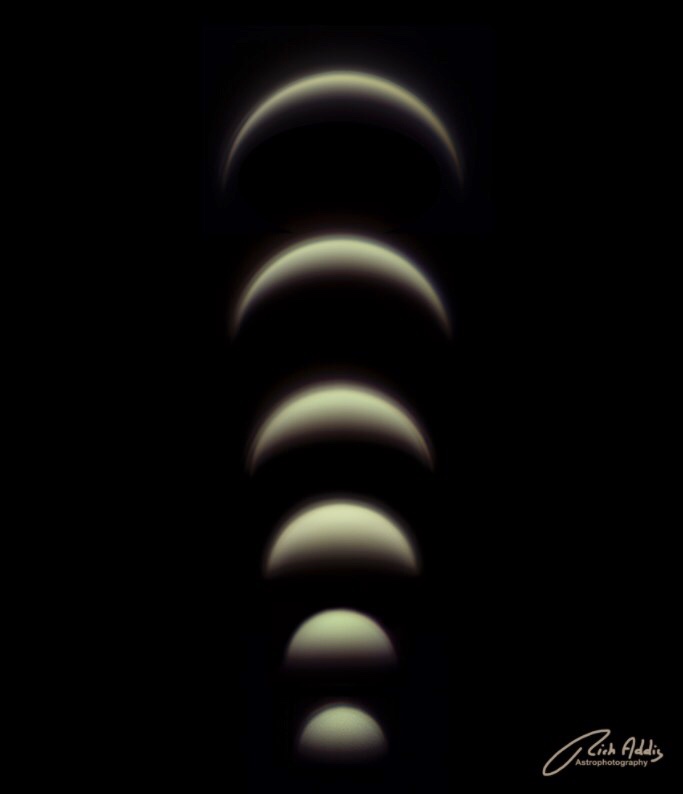Credit & Copyright: Richard Addis
Explanation:
Just
as
the Moon goes
through phases,
Venus' visible sunlit hemisphere waxes and wanes.
This composite of backyard
telescopic images illustrates the steady changes for
Venus
during
its current stint as our evening star, as the inner planet grows
larger but narrows to a thin crescent.
Images from bottom to top were taken during 2020 on dates
February 27, March 20, April 14, April 24, May 8, and May 14.
Gliding along its interior orbit between Earth and Sun, Venus grows
larger during that period because it is approaching planet Earth.
Its crescent narrows, though, as Venus swings closer to our
line-of-sight to the Sun.
Closest to the Earth-Sun line but passing about 1/2 degree north of the
Sun on June 3, Venus will reach a (non-judgmental)
inferior
conjunction.
Soon after, Venus will shine clearly above the eastern horizon in
predawn skies as planet Earth's
morning star.
After sunset tonight look for Venus above the western horizon
and you can also spot
elusive innermost planet Mercury.
1999 2000 2001 2002 2003 2004 2005 2006 2007 2008 2009 2010 2011 2012 2013 2014 2015 2016 2017 2018 2019 2020 2021 2022 2023 2024 2025 |
Yanvar' Fevral' Mart Aprel' Mai Iyun' Iyul' Avgust Sentyabr' Oktyabr' Noyabr' Dekabr' |
NASA Web Site Statements, Warnings, and Disclaimers
NASA Official: Jay Norris. Specific rights apply.
A service of: LHEA at NASA / GSFC
& Michigan Tech. U.
|
Publikacii s klyuchevymi slovami:
Venus - phases - Venera - Faza Luny ili planet
Publikacii so slovami: Venus - phases - Venera - Faza Luny ili planet | |
Sm. takzhe:
Vse publikacii na tu zhe temu >> | |
